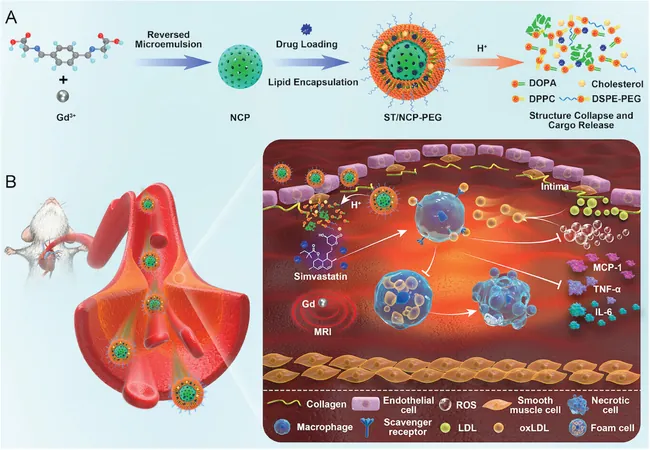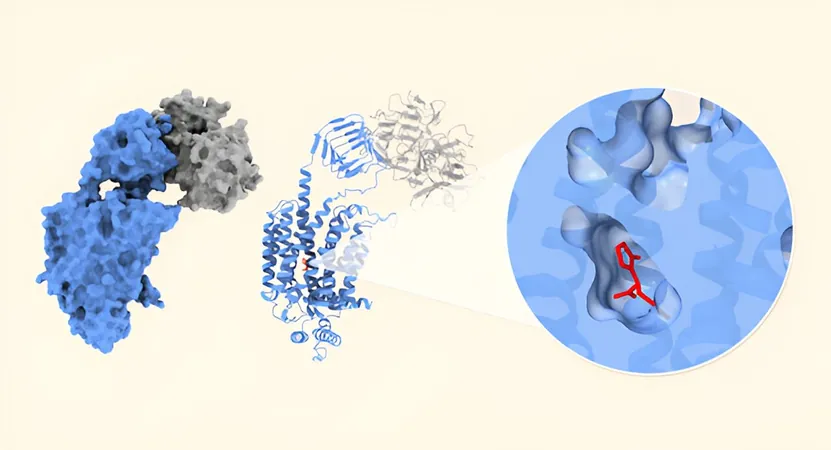
Breakthrough Nanoparticle Technology Revolutionizes Atherosclerosis Diagnosis and Treatment!
2024-09-18
Introduction
Atherosclerosis, a condition characterized by the build-up of plaque in the arteries, poses a significant threat to cardiovascular health, contributing to an alarming 17.9 million deaths annually from ischemic heart disease and stroke worldwide. This condition has seen a concerning rise, especially among younger populations, driven primarily by modern lifestyle choices such as poor diet, lack of physical activity, smoking, and high alcohol consumption.
Statistics and Impact
In Singapore, the repercussions of cardiovascular diseases are severe, accounting for 31% of deaths in 2022. Experts predict a staggering threefold increase in obesity-related heart attacks by 2050, underscoring the urgent need for innovative medical solutions.
Current Imaging Methods
Current methods for imaging atherosclerotic plaques, including intravascular ultrasound, coronary angiography, computed tomography angiography, and magnetic resonance imaging (MRI), have their drawbacks. While these imaging techniques provide insight into arterial conditions, they often suffer from limitations related to resolution, invasiveness, and a critical inability to effectively deliver targeted therapies.
Limitations of Existing Treatments
Intravascular ultrasound, while useful, is invasive and primarily applicable to larger blood vessels. Coronary angiography relies on X-ray technology and dye injection, posing risks associated with radiation exposure. Computed tomography angiography also uses radiation and is not without its limitations. Though MRI offers the highest detail among imaging methods, none currently provide a satisfactory means for direct treatment of atherosclerosis. Unfortunately, there are no medications available that specifically target atherosclerotic plaques to reverse or significantly alleviate the condition. Standard treatment protocols include medications like statins for cholesterol management and anti-platelet drugs like aspirin to prevent clots, but these merely stabilize existing plaques rather than eliminate them.
Nanoparticle Technology Development
Enter a team of innovative researchers from the National University of Singapore's Yong Loo Lin School of Medicine (NUS Medicine). Under the guidance of Assistant Professor Wang Jiong-Wei, a groundbreaking nanoparticle technology has been developed, promising to transform both diagnosis and treatment of atherosclerosis in a non-invasive manner. This pioneering theranostic approach, highlighted in the journal "Small," stands to revolutionize cardiovascular medicine by offering a fresh outlook on managing atherosclerosis.
Team and Research Collaboration
The collaborative effort includes expertise from the Departments of Biomedical Engineering, Chemical and Biomolecular Engineering, and Chemistry, showcasing the interdisciplinary nature of this exciting development. Their advanced nanoparticle can not only identify atherosclerotic plaques but also deliver therapeutic agents directly to the affected areas, demonstrating superior efficacy in preclinical models.
Mechanism of Nanoparticle Delivery
These nanoparticles, composed of nanoscale coordination polymers (NCP) and a responsive pH linker, are designed to disintegrate in the acidic environment typical of atherosclerotic plaques. This reaction facilitates the release of gadolinium, a contrast agent utilized in MRI for real-time plaque imaging, along with Simvastatin, a potent anti-inflammatory drug.
Enhanced Treatment Efficacy
Intriguingly, this novel approach allows for the delivery of Simvastatin at a rate 1000 times higher to the plaques compared to traditional systemic administration, resulting in enhanced therapeutic effects and reduced systemic side effects.
Conclusion and Future Directions
"This innovative technology not only enhances non-invasive diagnosis but also provides targeted treatment options for atherosclerosis, heralding a new era in cardiovascular care," said Assistant Professor Wang, emphasizing the potential impacts of this research. As the proof-of-concept study demonstrates considerable promise, the team is eager to further validate their findings and initiate clinical trials, potentially delivering groundbreaking advances in how we manage one of today's most significant health challenges. Stay tuned as this development could change the landscape of cardiovascular healthcare forever!




 Brasil (PT)
Brasil (PT)
 Canada (EN)
Canada (EN)
 Chile (ES)
Chile (ES)
 España (ES)
España (ES)
 France (FR)
France (FR)
 Hong Kong (EN)
Hong Kong (EN)
 Italia (IT)
Italia (IT)
 日本 (JA)
日本 (JA)
 Magyarország (HU)
Magyarország (HU)
 Norge (NO)
Norge (NO)
 Polska (PL)
Polska (PL)
 Schweiz (DE)
Schweiz (DE)
 Singapore (EN)
Singapore (EN)
 Sverige (SV)
Sverige (SV)
 Suomi (FI)
Suomi (FI)
 Türkiye (TR)
Türkiye (TR)